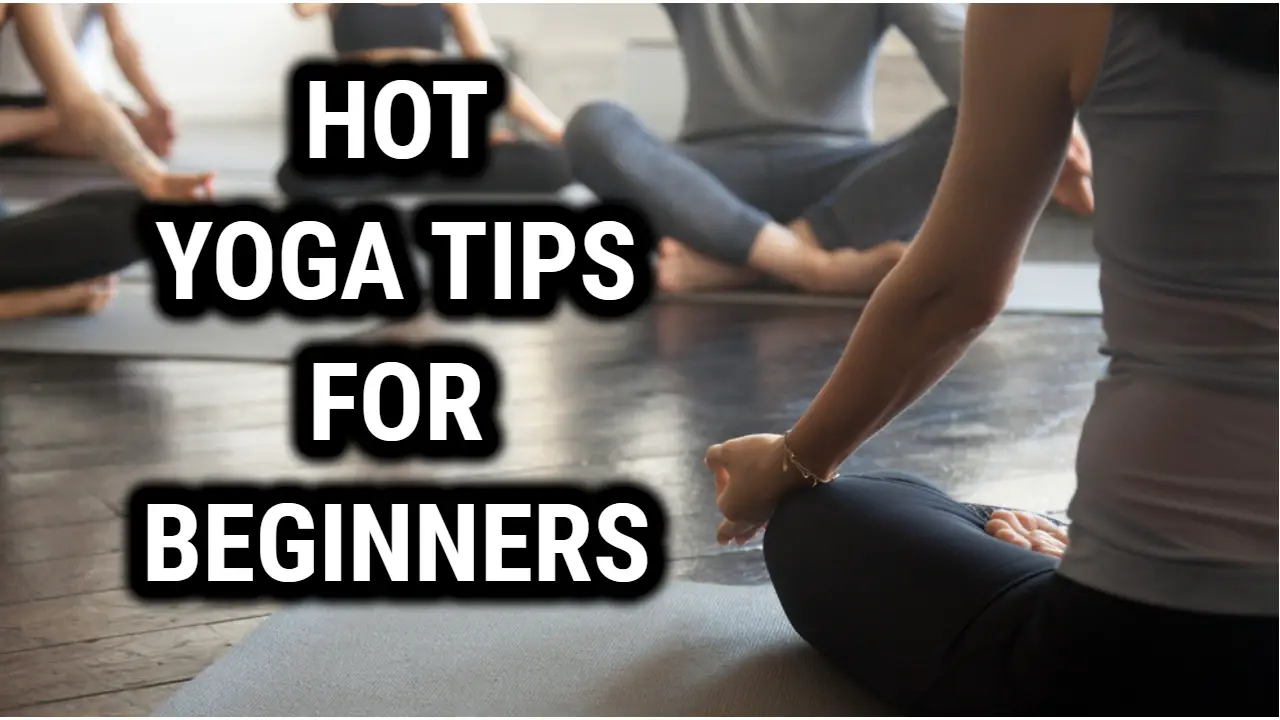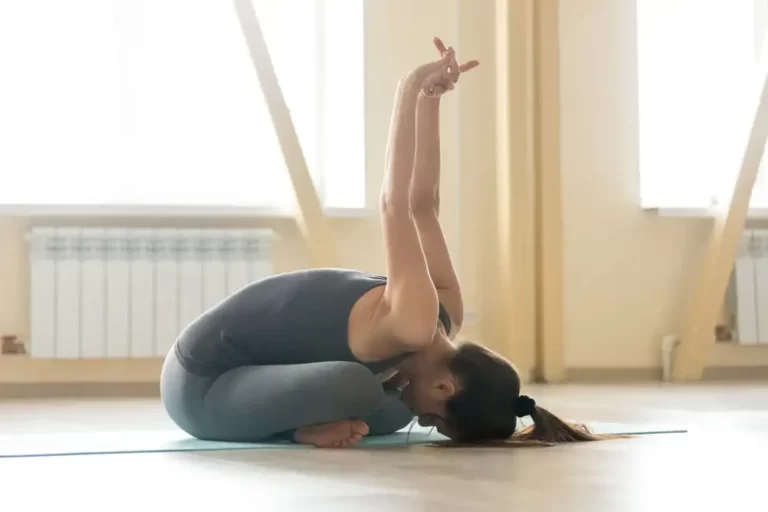Hot Yoga Tips For Beginners

Hot yoga is a popular form of yoga that involves performing traditional yoga poses in a heated room. The practice is known for its ability to improve overall health, increase range of motion, and reduce stress and anxiety. However, for beginners, the high temperatures and intense workout can be overwhelming.
If you’re new to hot yoga, it’s important to prepare yourself both mentally and physically. This article will provide tips and advice for beginners to help them get the most out of their hot yoga practice. From what to wear to how to stay hydrated, these tips will help you feel confident and comfortable in your first hot yoga class.
Benefits of Hot Yoga
Hot yoga, also known as Bikram yoga, is a type of yoga practiced in a room heated to around 105 degrees Fahrenheit with a humidity of 40%. Here are some benefits of hot yoga:
- Improved Flexibility: The heat in the room allows your muscles to warm up and stretch more easily, which can lead to improved flexibility over time.
- Increased Strength: Hot yoga can help build strength in your muscles, particularly in your legs, core, and upper body.
- Better Cardiovascular Health: Practicing hot yoga can get your heart pumping and increase your cardiovascular endurance.
- Reduced Stress: The heat and focus on breathing can help calm your mind and reduce stress levels.
- Weight Loss: Hot yoga can be a great way to burn calories and lose weight, especially when combined with a healthy diet.
- Improved Immune System: Sweating during hot yoga can help flush out toxins and improve your immune system.
It’s important to note that hot yoga may not be suitable for everyone, particularly those with certain medical conditions or who are pregnant. It’s always a good idea to consult with a doctor before starting any new exercise routine.
Preparing for Hot Yoga
Before starting a hot yoga practice, it is important to prepare properly to ensure a safe and enjoyable experience. Here are some tips to help beginners prepare for their first hot yoga class:
Hydration Tips
Hot yoga is a strenuous activity that can cause significant sweating and fluid loss. It is important to stay hydrated before, during, and after class to prevent dehydration and overheating. Here are some hydration tips for hot yoga:
- Drink plenty of water throughout the day leading up to class.
- Avoid drinking caffeine or alcohol before class, as they can dehydrate the body.
- Bring a water bottle to class and take sips throughout the class as needed.
Clothing and Equipment
Wearing the right clothing and bringing the right equipment can make a big difference in the comfort and effectiveness of a hot yoga practice. Here are some tips for clothing and equipment:
- Wear lightweight, breathable clothing that allows for a full range of motion.
- Consider investing in a high-quality yoga mat that provides good grip and cushioning.
- Bring a small towel to wipe away sweat during class.
- Some studios provide props like blocks and straps, but it is always a good idea to bring your own if you have them.
Eating Before Hot Yoga
What you eat before hot yoga can have a big impact on your comfort and performance during class. Here are some guidelines for eating before hot yoga:
- Avoid eating heavy meals within two hours of class, as they can cause digestive discomfort and make it harder to move and breathe.
- Choose light, easily digestible foods like fruit, nuts, or a small smoothie if you need to eat before class.
- Stay hydrated by drinking plenty of water leading up to class, but avoid drinking too much water right before class, as it can make you feel uncomfortable during the practice.
During Hot Yoga
Hot yoga can be an intense workout, especially for beginners. Here are some tips to help make the experience more comfortable and enjoyable:
Breathing Techniques
One of the most important aspects of hot yoga is controlling your breathing. It’s common to feel out of breath or to take large, irregular gasps during intense workouts. However, focusing on deep, controlled breathing can help you stay calm and centered during your yoga poses. Remember to inhale through your nose and exhale through your mouth, and try to take long, deep breaths throughout your practice.
Modifications for Beginners
If you’re new to hot yoga, it’s important to listen to your body and modify poses as needed. Don’t push yourself too hard or try to keep up with more experienced yogis. Instead, focus on proper alignment and form, and use props like blocks or straps to help you ease into poses. If a pose feels uncomfortable or painful, don’t be afraid to back off or skip it altogether.
Maintaining Proper Form
Proper form is essential in hot yoga to prevent injury and get the most out of your practice. Make sure to engage your core and keep your shoulders relaxed, and pay attention to your alignment in poses like downward dog and warrior II. If you’re not sure if you’re doing a pose correctly, don’t be afraid to ask your instructor for guidance.
After Hot Yoga
After a hot yoga session, it’s important to take care of your body to help it recover properly. Here are some tips to help you cool down, stretch and recover, and replenish your body with hydration and nutrition.
Cooling Down
After a hot yoga class, it’s important to cool down gradually to avoid dizziness or lightheadedness. Take your time moving out of the room and avoid sudden movements. Find a cool spot and sit down for a few minutes to let your body adjust to the cooler temperature. You can also use a cool towel or a fan to help lower your body temperature.
Stretching and Recovery
Stretching after a hot yoga session can help prevent muscle soreness and stiffness. Take a few minutes to stretch out your muscles while they are still warm. Focus on areas that feel tight or sore, and hold each stretch for 20-30 seconds. You can also use a foam roller or massage ball to help release any tension in your muscles.
Hydration and Nutrition
Replenishing your body with fluids and nutrients is crucial after a hot yoga session. Drink plenty of water to rehydrate your body and replace any fluids lost through sweating. You can also try coconut water or a sports drink to help replenish electrolytes. After your hot yoga session, reach for foods high in magnesium, potassium, and calcium—electrolytes that will help rehydrate you. A light snack before and after can help your body handle the heat and its impact.
Conclusion
Hot yoga can be a challenging but rewarding practice for beginners. It offers a range of benefits, including improved overall health, weight loss, reduced stress, increased range of motion, and a reduction in anxiety and depressive symptoms. However, it is important to take the necessary precautions to ensure a safe and enjoyable experience.
Beginners should start with a gentle class and gradually work their way up to more advanced classes. They should also stay hydrated, wear comfortable clothing, and bring a towel to wipe away sweat. It is also important to listen to the body and take breaks when needed.
Hot yoga is not suitable for everyone, particularly those with medical conditions that high temperatures can aggravate. It is always advisable to consult with a healthcare professional before starting any new exercise routine.
Hot yoga can be a great way for beginners to improve their physical and mental well-being. By following these tips and taking the necessary precautions, beginners can enjoy a safe and rewarding practice.






